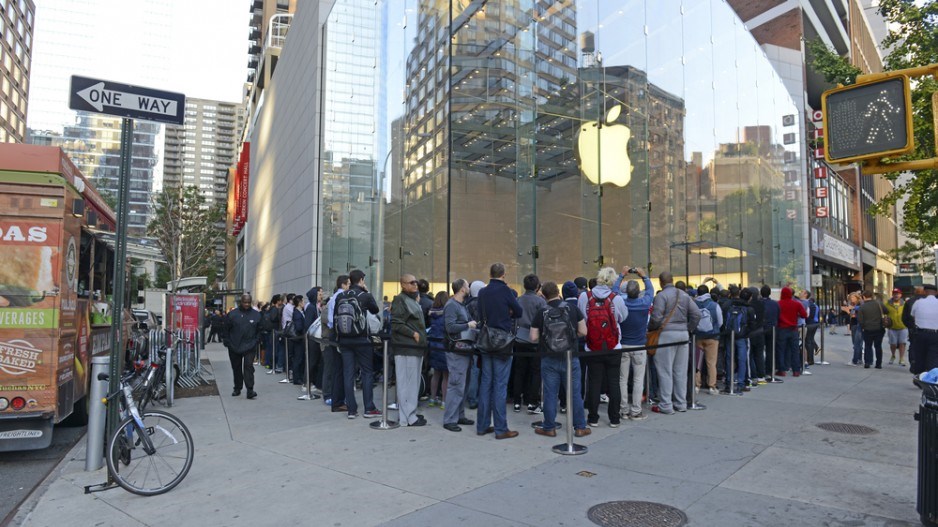When Apple (Nasdaq: AAPL) launched its iPhone 6 and 6 Plus a year ago, the new smartphones boasted larger screens, upgraded cameras and faster computing power.
Devices flew off store shelves, setting sales records with more than 100 million phones sold in six months.
“The user’s expectation is on the day it’s available, they can upgrade their device or they can line up outside the store and purchase the latest device,” said Kim Ellery, senior product marketing manager at Vancouver-based cybersecurity firm Absolute Software (TSX:ABT).
This expectation has sent developers and security experts scrambling in the lead-up to September 9’s anticipated unveiling of the next iPhone model.
Developers will have to update the functionality of existing mobile apps and harden security vulnerabilities not only for new iPhone owners but also for the hundreds of millions of owners expecting to update their phones’ operating systems.
“We’d love it if we had more lead time,” said Jeff Epstein, director of product and channel marketing at QuickMobile.
The Vancouver-based company specializes in apps that provide schedules, analytics, photo sharing and search functions for conferences with as many as 50,000 people. QuickMobile developers have been tinkering throughout the summer with the beta version of the new iOS 9 operating system provided by Apple, but they won’t get to take a crack at the final version until just a few days before launch.
“When we sell mobile apps to enterprise, especially in the B2B space, every discussion we have there’s always a security question,” Epstein said.
“The challenge is, in many organizations, if their employees have Apple devices, I would say half of them are not controlled with a mobile application system where they control the deployment of the iOS.”
He said this causes “hiccups” for users and developers if an operating system is being used before apps are fully compatible or security vulnerabilities have been resolved.
Derek Manky, a global security strategist at Burnaby-founded Fortinet (Nasdaq:FTNT), anticipates these problems will get worse for developers and users as the smartphone market becomes more fragmented.
Manky, who prefers his Android device to his iPhone, said there are fewer security risks when it comes to Apple because the company controls both the hardware and the software.
Android takes a more open-source approach, which delights many developers but exposes vulnerabilities on those devices if owners aren’t careful.
“Unfortunately, people don’t focus on security that much. They focus on functionality, on convenience, and with that there’s always a trade-off to security.” Manky added that some of these issues could be minimized with an on-device intrusion detection system and the old-fashioned strategy of being smart about security.
“It’s like shooting fish in a barrel to be able to hack these devices now.”
The proliferation of different operating systems also means that integrating apps into a company’s own internal systems remains the biggest challenge for developers, according to Drew Lau.
“If you start having 10 or 12 different variations of phones that you have to test against and build applications against, you’ll start getting a point-to-point integration system,” said the product manager and developer at Vancouver-based Elastic Path Software.
Point-to-point integration paves the way for connections between systems and devices that typically can’t communicate with each other, but it’s a measure that can become unwieldy for a system.
Lau said the easiest way to overcome that is by finding a single integration layer that can be applied to all devices.
“I expect this to get a lot more complicated in the future,” he said, “so you might as well start moving toward that practice now so you can avoid that pain in another year, another two years, when this starts getting really crazy.”




